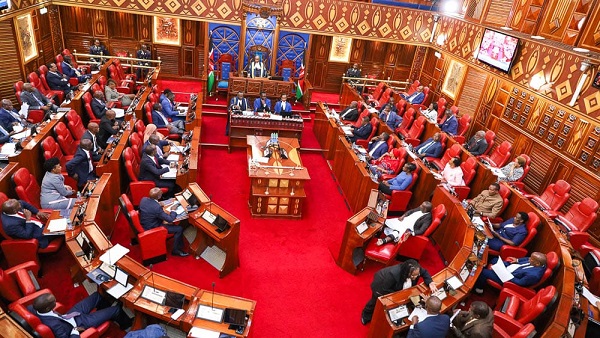In her latest report covering the year ending June 30, 2025, Nyakang’o revealed that counties spent Sh220.64 billion on salaries and allowances, up Sh10.8 billion from the previous year. This accounted for 47 per cent of total county expenditure of Sh470.23 billion—well above the 35 per cent legal ceiling.
Personnel costs also swallowed 41 per cent of the Sh533.11 billion in revenue collected by counties, leaving limited funds for projects such as roads, hospitals, and water supply.
Only eight counties, including Kilifi, Siaya, and Nakuru, remained within the legal wage bill limit. At the other extreme, Nyeri (55 per cent), Machakos (54.5 per cent), and Baringo (53.4 per cent) led the list of heavy spenders.
Kiambu County was flagged for using 42 per cent of its revenue on personnel, far above the ceiling. It also spent just 18 per cent of its funds on development, below the 30 per cent threshold required by law.
Other counties posting low development spending included Nairobi (12 per cent), Machakos (16 per cent), and Kisumu (17 per cent).
Nyakang’o criticized counties for ignoring resolutions from the 2024 National Wage Bill Conference, which directed county executives to draw action plans for reducing payroll costs by June 2024.
“The National Wage Bill Conference resolved that counties must refine strategies to achieve a wage bill-to-revenue ratio of 35 per cent. These were to be approved by June 2024, but counties have not complied,” Nyakang’o said.
Her office has set a 2028 deadline to bring wage bills down, but several counties, including Kajiado, Bomet, and Turkana, have yet to submit action plans.
The report also flagged risks in counties still processing salaries manually, with Sh10.7 billion paid outside automated systems. Counties like Garissa, Meru, Wajir, and Tharaka Nithi were cited, raising concerns about ghost workers and payroll manipulation.
Nyakang’o cautioned that starting with the 2025/26 financial year, requests for salaries processed outside automated payroll systems will not be approved.






